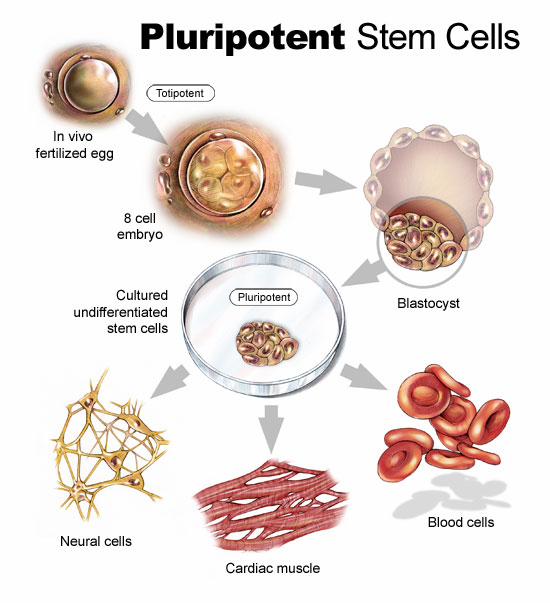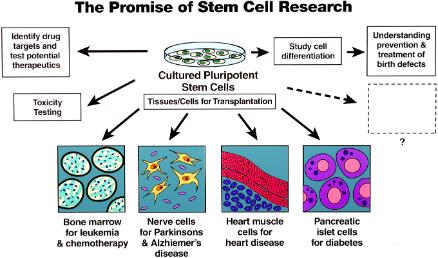What Is Embryonic Stem Cell Research? Embryonic Stem Cell Research (ESCR) is a branch of stem cell research in which scientists study embryonic stem cells and use them to find cures for diseases that have plagued humanity for centuries. Stem cells are undifferentiated cells inside the body, meaning that they are not a specific cell type yet. Embryonic stem cells are more favorable than other type of stem cells because they are pluripotent, unlike adult stem cells which are multipotent. Potency is what determines how many types of cells a certain stem cell can transform into. A pluripotent stem cell can turn into almost any type of cell in human body while a multipotent stem cell can only turn into a limited selection of cells in the body. The major challenges to embryonic stem cell research is the amount of time and money to do the research and the morals of may people opposing ESCR. For more on what embryonic stem cell research is, visit this website. (1, 2, 3, 4, 20) | (click image for source) |
(click image for source) | Why Do Scientists Research Embryonic Stem Cells? Scientists research ESC because there is potential for great discoveries to be made. If performed and controlled correctly, ESC therapy can be used to heal wounds and cure diseases, which could result in saving numerous lives. ESCR is a revolutionary field of study that has loads of potential. All scientists need to do is learn how to change the ESC into a certain type of cell. Naturally, as ESC mature, they go through a process called differentiation in which they become the type of cell that the body needs. If scientists could find a way to successfully differentiate the ESC into a specific type of cell, then they can be transplanted into the body to replace dead cells. (5) For a more in depth look as to why scientists study ESC, check out our Potential Uses page. |
How Do Scientists Research Embryonic Stem Cells? Before scientists had access to embryonic stem cells, they used mouse embryonic stem cells to understand how they work. Embryonic stem cells are isolated from in vitro fertilization (IVF) or somatic cell nuclear transplant (SCNT). Scientists used to use IVF to obtain embyronic stem cells by taking extra eggs that weren't used and extracting stem cells from those embryos. It was not until about 8 years ago that scientists discovered a new method in isolating embyronic stem cells. (7) In Vitro Fertilization (IVF) Somatic Cell Nuclear Transplant (SCNT) | To learn more about how scientists isolate embryonic stem cells, CLICK the picture above! |
|Background| History Issues Innovators Potential Uses


